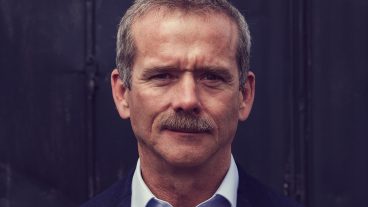It’s been 30 years since Roberta Bondar made history as Canada’s first female astronaut and first neurologist in space. She joined CBC Radio’s The Sunday Magazine to reflect on her 30th anniversary and the barriers she had to break on her historic journey to space.
On January 22, 1992, Roberta joined the Space Shuttle Discovery to conduct experiments in the International Microgravity Laboratory. Representing the international scientific community, she conducted over forty advanced experiments for fourteen nations.
Roberta dreamed of being an astronaut since she was a child, saying on her website that “to be a spaceman was the most exciting thing I could imagine.” In school, her guidance counsellor tried to push her away from this dream as “science wasn’t a subject for girls”, but Roberta defied this unwritten rule.
At the time, women weren’t allowed to fly in the Air Force — the typical career path for an astronaut — so Roberta focused on developing other skills that could be needed in space. Just in case the opportunity presented itself, she wanted to be ready. Science was this way forward, and no guidance counsellor was going to stop her.
Roberta holds a BSc in Zoology and Agriculture, MSc in Experimental Pathology, PhD in Neurobiology, MD, and is a Board-Certified Neurologist by the Royal College of Physicians and Surgeons of Canada.
“No one had done any of this. I was really on the tip of the prow of a ship plowing through heavy seas. There were no role models for me in Canada,” Roberta told CBC Radio.
Forging her own path to space, Roberta has become a role model for female astronauts everywhere. But, she said, we are a long way off from inclusivity and diversity in space programs.
“Being the first Canadian woman was a big thing because it supposedly was going to show the diversity of the space program, which is — I don’t want to choke over it — but I’m not sure that we have that, still.”
Astronaut recruitment programs still lean heavily towards military-trained males, Roberta said, with NASA confirming that 73 women have been to space, accounting for about 12 per cent of all people who have been sent there so far.
Roberta’s childhood was spend asking, why? And she credits this along with her supportive family for her success.
“If we don’t ask those deep questions about what’s out there … then we are never going to evolve,” Roberta told CBC.
For more than a decade after her spaceflight, Roberta led an international space medicine research team to explore connections between astronauts recovering from spaceflight and neurological illnesses on Earth, such as stroke and Parkinson’s disease. Her techniques have been used in clinical studies at the Harvard Medical School and University of New Mexico.
Deeply impacted by her journey off-planet, Roberta now runs the Roberta Bondar Foundation that fuses art and science in an effort to protect our planet. It was the absence of the day-to-day sounds and smells of Earth — birds singing, rain falling — that really made her realize how much Earth meant to her. She told CBC:
“When you look at Michelangelo and Leonardo da Vinci, you see the work that was done. It captures both art and science. So, at some point along our path, art and science split.
“I’m not sure that was the best thing to do because scientists have to be creative or they couldn’t possibly develop ways of looking at things with different perspectives. And artists really have to understand some science.”
Roberta is globally recognized for her pioneering contributions to space medicine research, fine art photography, and environment education. Her highly motivational talks — punctuated by her stunning photographs — focus on change, social responsibility, and our environment.
Interested in learning more about Roberta and what she can bring to your next in-person or virtual event as a keynote speaker? Email us at [email protected].




